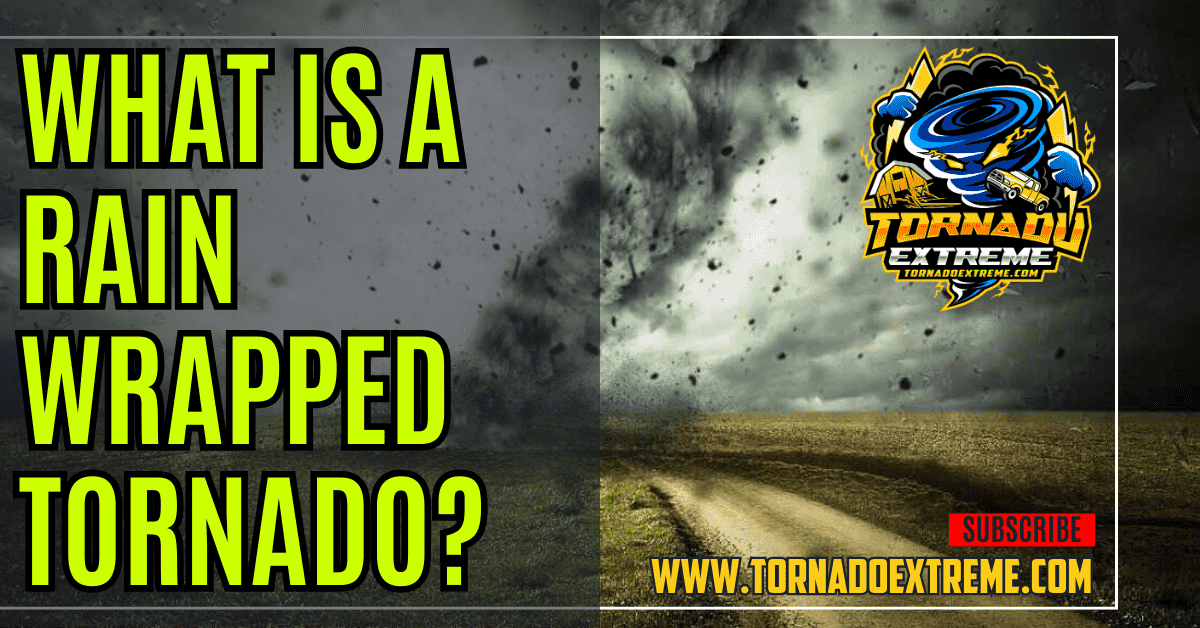Rain wrapped twisters can be very dangerous throughout the United States’ Tornado Alley. Swaddled by heavy showers, these tornados are difficult to see and therefore pose an increased threat. High wind speeds amplify their destructive capabilities, but are rarely foreseen.
Unveiling the Mystery of Rain Wrapped Tornadoes
Rain wrapped tornadoes remain as one of the most elusive challenges in Tornado Alley. They’re formation, veiled by heavy rain fall, remains a mystery to both residents and experts across the United States.
Formation of Tornados: A quick overview
One of nature’s most awe-inspiring phenomenon’s is also one of its most dangerous. Twisters are violent rotating columns that extend from thunderstorms all the way to the ground. The usual set up for a twister involves supercell thunderstorms. These storms possess rotating updraft bases.
States such as Oklahoma, Iowa, and Minnesota experience frequent tornados during warmer months which run through spring and summer. However other locations across the globe may witness them given favorable conditions.
When a tornado watch is issued it means that everything is just right for a tornado to develop but none have appeared yet. While a tornado warning indicates that one has been sighted or will form soon.
While rotating air columns typically remain invisible during their time in the sky they may condense into a visible funnel when they reach the ground; this is known as a condensation funnel. Wind speeds in excess of 200 mph are common for F5 twisters which cause catastrophic amounts of damage in their path.
Supercells make up most thunderstorm types that produce tornados and come with rear flank downdrafts (RFD) on their backside which add even more power to them.
Tornados destroy anything they touch once touching down on solid earth; which means those living in areas prone to twisters must construct a plan to stay safe and be ready to act when they hear the sirens go off.
As technology has improved so has our understanding of tornados. Organizations like Vortex2 have conducted research in order to document them better and improve forecasting.
With the help of radar, satellite imagery, and storm chasing teams scientists can now track and predict the path of tornados more effectively than ever before. Youtube and social media platforms also play a major role in disseminating information on these storms that will often appear quite suddenly; if one is near please find safety within a sturdy building or underground shelter as quickly as possible.
Tornados are a fascinating yet dangerous force that should be taken very seriously by everyone. Being aware of tornado warnings along with taking necessary precautions can help minimize risks such as injury or damage to property caused by these spiraling storms.
The formation of this catastrophe is truly unique as various atmospheric conditions must collide all at once. By better understanding how twisters form we can then proceed to prepare for their arrival and respond accordingly in the future.
The United States is no stranger to tornadoes. With an area known as Tornado Alley and the perfect climate for their formation, you can imagine they’ve seen quite a few over the years. The geography and climate of the United States help produce severe thunderstorms that are necessary for tornadoes to form in the first place.
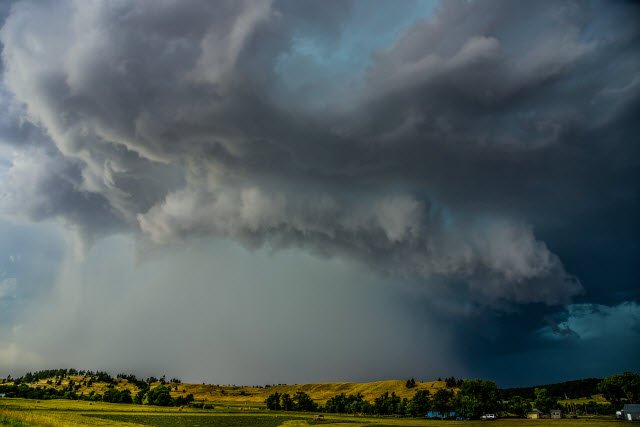
How Rain Wrapped Tornadoes Differ in Formation
Rain-wrapped tornadoes form differently compared to your typical twister. They initially form just like any other, but they’re born inside the heaviest part of a storm with the most intense rainfall. This rain wraps around it, effectively hiding it from view.
However, this intense rainfall doesn’t just cover up the storm, but also contributes to its stealthiness. As it picks up more moisture, it becomes engulfed within a curtain of rain making it nearly disappear to prying eyes. This characteristic is unique to our region where we see these types of violent storms that produce natural disasters such as rain wrapped tornadoes.
Unlike other tornadoes that may occasionally be spotted visually or on radar, these guys offer little to no signs when they’re coming. Radar detection becomes even more challenging due to all of the precipitation surrounding them which masks their signature.
With traditional methods failing at every turn, understanding what makes rain-wrapped tornadoes different will allow meteorologists and scientists alike improve warning systems in areas of high risk in America. The hidden nature increases dangers and risks for communities living in these regions so early detection and warning systems must be prioritized.
See Also: What Is a Multi Vortex Tornado? A Comprehensive Exploration
Why Rain Wrapped Tornadoes are Hard to Spot
These twisters are pretty much invisible when you try looking at them with your own two eyes. The heavy downpour wrapping around them acts like a cloak, shielding them from anyone trying to get a visual representation. This poses major challenges for both residents and storm chasers who rely heavily on visuals during severe weather events.
Not only does it hide them, but the rain also interferes with radar detection. Normal systems can’t differentiate between a regular tornado and one soaked in heavy rainfall which causes delays in warnings for those that need it most. These obstacles heighten risks during rain wrapped tornado events.
The struggles to spot them become even more difficult at night. Without sunlight, you’ll have to rely solely on radar and storm spotter reports but as mentioned earlier, these methods aren’t always the best or efficient.
Lastly, their rapid development leaves little time for warnings before they’re already in your backyard destroying everything you’ve worked so hard for. When something comes out of nowhere like this — just imagine how dangerous that could get if you didn’t have any warning beforehand. Both visuals and radar are quite limited when trying to detect rain wrapped twisters so we must come up with better solutions soon.
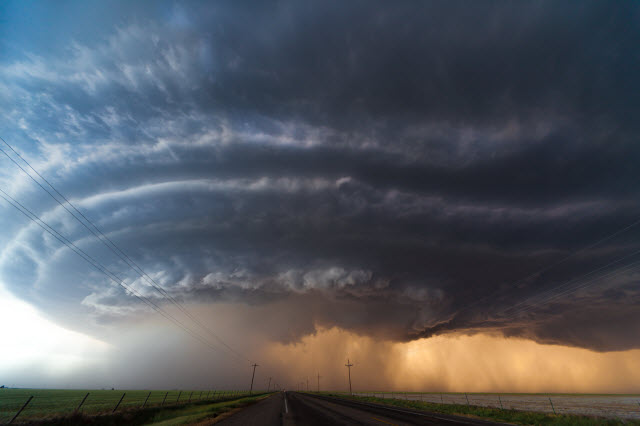
The Role of Heavy Rain in Concealing These Tornadoes
It’s no secret that heavy rainfall hides tornados from sight. With what seems like a dense curtain of water droplets surrounding it, it blends right into the storm seamlessly making it practically impossible to spot at times.
Radar detection is also greatly affected by the intensity of the rain tied to these storms. The signals sent out will be reflected back by the heavy downpour causing errors or complete oversight by meteorologists. When this happens, they underestimate or don’t even notice its presence – a deadly scenario either way!
At its worst state — heavy rain associated with these storms creates flash flooding as another layer of danger on top of everything else we’ve talked about today. This puts residents at major risk who may find themselves dealing with multiple threats all at once — complicating evacuation and safety measures further than they already are during times like that!
The Risks Associated with Rain Wrapped Tornadoes
Rain wrapped tornados are a serious threat because they are hidden. You can’t see them or detect them accurately on radar, making it difficult to warn people in advance. This makes it more likely for someone to get hurt or killed because the time they have to seek shelter is reduced.
In addition to that, these tornados happen inside storms that also produce flash flooding and hail which can be harmful. The combination of all these hazards can cause a lot of damage and make it hard for responders and infrastructure to help everyone.
The Challenge in Detecting and Reporting
Detecting and reporting rain-wrapped tornadoes is hard. When one happens, heavy rain falls as well which obscures vision. This makes traditional ways for confirming the presence of a tornado unreliable because you can’t see anything. Radar technology also has limitations in differentiating between heavy rain and a tornado, so you don’t know if what you’re seeing is accurate or not.
People become more critical than ever because without their reports we are pretty much helpless when trying to spot these dangerous weather occurrences. However, spotting something like this under such conditions becomes increasingly dangerous for storm spotters themselves. So relying on the public might be our best bet at getting timely information but may still fall short.
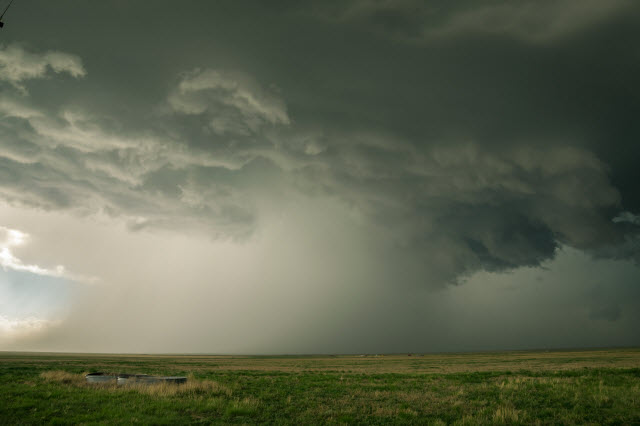
Impact on Tornado Warning Systems
Rain-wrapped tornadoes have unique characteristics that delay warnings by these systems. Because of how difficult it is to detect one with radar or visually, warnings won’t come until later into the disaster than we would like them to. This obviously makes those who depend on these systems vulnerable longer than needed before being told about the danger approaching.
Improving detection and reporting methods is necessary if we want our warning systems to be effective against rain-wrapped tornados like with other ones . Advanced radar technology paired with public awareness could help mitigate some risks but will always fall short compared to what we could do with better information.
Assessing Wind Speeds and Potential Damage
Seeing how these tornados are not visible, it is difficult to understand their strength. People rely on visuals to estimate wind speed but when that isn’t possible, they have to guess based on radar data and damage analysis after the event. This could lead them to underestimate the power of a tornado which is dangerous.
Rain wrapped tornados can cause a lot of damage; they uproot trees and destroy property. When you can’t see them, it makes it hard for people to understand what they’re dealing with and prepare themselves in advance.
Comparing Rain Wrapped Tornadoes to Other Types
Rain-Wrapped tornadoes differ from other types in just one way: they are hidden by rain. Even though all tornados are dangerous, the fact that you can’t see or detect these ones makes them more harmful than others. It’s almost impossible for people to tell if one is coming until it’s too late which is why we need advanced technology that can do this for us.
These types of tornados also happen regularly inside storms that produce other hazards such as flash floods or hail which require their own form of warnings and preparation because combining all those things won’t be easy on responders and infrastructure.
Geographic Hotspots and Historical Context
If you live in an area where weather patterns favor the rapid development of severe thunderstorms, then you’re in a place where rain-wrapped tornados may occur more frequently. These regions tend to favor their creation so they should always be ready for them .
Knowing which areas pose a higher risk allows us to plan accordingly and mitigate some dangers posed by these invisible killers .
Among the various hotspots, some tend to have these certain types of tornadoes more often than others. This is due to a combination of high humidity, unstable atmospheric conditions, and the right wind shear needed for tornado formation. Geographically locating these hotspots allows meteorologists and emergency management officials to improve warning systems and educate the public about the risks and safety measures associated with rain wrapped tornadoes.
Finding Where Rain Wrapped Tornadoes Are Most Frequent
While tornadoes can form in several places across the world, rain wrapped tornadoes are more likely in areas with certain atmospheric conditions. Many severe thunderstorms are known to occur in such regions. The heavy rainfall linked to those storms can easily hide a tornado from view. Therefore, it’s crucial that steps be taken to recognize these areas for two reasons: 1) To create targeted warning systems; 2) Develop preparedness plans able to protect communities from unseen threats.
Regions with frequent severe thunderstorms — particularly Tornado Alley and Dixie Alley in America — suffer most from rain-wrapped twisters. These places carry all the conditions necessary for them to form under heavy rainfall. By locating where they happen most often, scientists can study patterns and improve forecasting models so that residents receive earlier warnings in said high-risk areas.
Dixie Alley: A Closer Look
A region in the southeast of America is called Dixie Alley. This place is particularly known for rain wrapped tornadoes. It’s different from Tornado Alley, which gets more recognition. The weather is created by a unique set of atmospheric conditions that contribute to the production of these hidden tornadoes. The geography and climate make it much more likely for severe storms to form, resulting in a hotspot for rain wrapped tornadoes.
There’s not much visual warning with these kinds of tornadoes since they are hidden by heavy rain. Due to this, it makes it harder to detect them and warn people ahead of time. However, community preparedness and enhanced detection technology have been implemented into the area in order to keep residents safe. If these systems weren’t put into place, many people would be injured or dead due to waiting until seeing the actual tornado before taking action.
History’s Most Notable Rain Wrapped Tornado Events
Several historical events involving rain-wrapped tornadoes have left permanent marks on communities that were affected. These events usually result in massive damage and unfortunately many deaths due to how difficult it can be to see or predict them before hitting an area completely out of nowhere. Learning more about these historic events will further develop scientists’ understanding of the severity and importance of effective warning systems for rain wrapped tornadoes.
For example, one notable event was an outbreak that struck a highly susceptible region. The reason this outbreak was so significant was because most of the radar signatures were obscured by heavy rainfall during their initial stages. Even though experts did all they could at the time, there’s no way they could’ve predicted such a high amount of damage with little warning signs shown beforehand.. Since then, meteorologists and emergency management entities have worked together to prevent this from happening again by enhancing their detection systems and plans for emergencies like those with hidden coverage.
Several historically significant rain wrapped twisters have brought devastation to the unfortunate communities they drop in on. In each case their damage is often amplified by how difficult detection and warning are — until it’s too late. Analyzing the severity of these events as well as the major changes in meteorology methods and community practices that follow, provides a harsh reminder of how dangerous these hidden threats can be.
One such event was an outbreak in a region especially known for its vulnerability to rain wrapped tornadoes. Very few experts were able to provide much warning at all since heavy rainfall obscured most radar signatures during crucial times. This left the area with no real chance of proper preparation against such a large amount of destruction — it did however function as a wake up call to many weather scientists who then began heavily investing into better detection technology and a safer public education system.

Lessons Learned and Advances in Meteorology
The study of past rain wrapped tornado events has led to important advancements in meteorology and tornado detection technologies. By analyzing these events, scientists have been able to identify patterns and develop new methods for predicting the likelihood of rain wrapped tornadoes. These advancements include improved radar technology and algorithms designed to detect tornado signatures even when obscured by heavy rain.
Additionally, the lessons learned from these tragic events have fueled efforts to better educate the public about the importance of taking tornado warnings seriously, regardless of whether a tornado is visible. Public awareness campaigns and the development of emergency preparedness plans specifically tailored to areas prone to rain wrapped tornadoes are direct outcomes of these lessons. Together, these advances represent significant strides towards minimizing the impact of rain wrapped tornadoes on affected communities.
Being prepared and knowing what to do when a warning is issued is key to staying safe during a rain-wrapped tornado outbreak. Most of the time you won’t be able to see one, so relying on sight would be pointless. Instead, listen for an alert through your weather radio or app which will provide real-time alerts. Have a plan as well as shelter locations in mind so you’re ready to move in an instant if needed.
Across America’s southeast region lies Dixie Alley; infamously known for its twisting storms disguised by downpours. Unlike the more widely recognized Tornado Alley, it isn’t just a different label pinned onto the same place but rather defines an area with other atmospheric conditions that cultivate these hidden cyclones. The regional geography combined with climate reforms increase severe thunderstorm odds making it easier for twisters within sheets of water to spawn here.
In places like this where poor visibility often leads locals unfamiliarity into thinking they are safer than they are; enhanced detection technology and community education becomes critical. Residents need to understand their area’s propensity for concealed threats mean they should trust warnings more than their own eyesight or gut feelings and take shelter as soon as possible. Rain wrapped tornadoes give little time to react with early visuals, so waiting only risks more lives and damages.
Essential Safety Tips and Precautions
When it comes to rain wrapped tornadoes, being prepared is half the battle. Having a plan and knowing where to go when a tornado warning is issued are essential steps in ensuring safety. This includes identifying a safe room or basement in your home, away from windows and exterior walls. It’s also important to have an emergency kit ready, stocked with essentials like water, food, and a first-aid kit.
For those living in areas prone to rain wrapped tornadoes, practicing tornado drills and staying informed about the latest weather forecasts during tornado season are crucial. Awareness of the weather conditions that lead to severe thunderstorms can help individuals anticipate and prepare for the possibility of a rain wrapped tornado. By taking these precautions, residents can significantly increase their chances of staying safe during these dangerous events.
Staying safe during an unpredictable twister like this requires citizens being ready at all times since visibility won’t do them any good here. Rather than relying on what they see, residents should invest in a good weather radio or app that will send out real-time alerts when necessary. They should also know where their closest shelter is be it home or elsewhere and practice getting there as quickly as possible.
When it comes to rain wrapped tornadoes, being prepared is your best bet. One of the essential steps in ensuring safety is having a plan and knowing where to head when a tornado warning is issued. This includes working out a safe room in your home or basement that isn’t near windows nor exterior walls. A fully stocked emergency kit with essentials like water, food, and a first-aid kit should be ready too.
For those living in areas prone to these types of tornadoes, practicing tornado drills and staying informed about the latest weather forecasts during tornado season are crucial. Awareness of the weather conditions that lead to severe thunderstorms can help individuals anticipate and prepare for the possibility of a rain wrapped tornado. By taking these precautions, residents can significantly increase their chances of staying safe during these dangerous events.
The Importance of Having a Safe Room or Shelter
Having a safe room or shelter is a critical component of tornado preparedness, especially for rain wrapped tornadoes that are difficult to detect visually. A safe room should be located in the lowest part of your home, away from windows, and sturdy enough to withstand high winds and flying debris. This designated safe space can provide essential protection during a tornado, offering a secure place for you and your family until the danger has passed.
Using Mobile Apps and Weather Alerts Effectively
In today’s digital age, mobile apps and weather alerts play a crucial role in keeping people informed about impending severe weather, including rain wrapped tornadoes. These tools can provide real-time updates and warnings, allowing individuals to take immediate action to protect themselves and their loved ones. Setting up alerts on your mobile device for severe weather warnings in your area can be a lifesaver, ensuring you’re always one step ahead of the storm.
Technology and Tools for Early Detection
Advancements in technology have significantly improved the early detection of rain wrapped tornadoes. Modern weather radars and forecasting tools can identify the signs of a tornado even when it’s hidden by heavy rain. These tools provide valuable time for warnings to be issued, giving people in the path of a tornado the chance to seek shelter. Meteorologists continually work on refining these technologies to enhance their accuracy and reliability.
Using Mobile Apps and Weather Alerts Effectively
In today’s digital age, mobile apps and weather alerts play an instrumental role in keeping people informed about impending severe weather, including rain-wrapped tornados. These tools can provide real-time updates and warnings, allowing individuals to take immediate action to protect themselves and their loved ones. Setting up alerts on your mobile device for severe weather warnings in your area can be a lifesaver, ensuring you’re always one step ahead of the storm.
See Also: Green Sky Tornado: Why Does the Sky Turn Green?
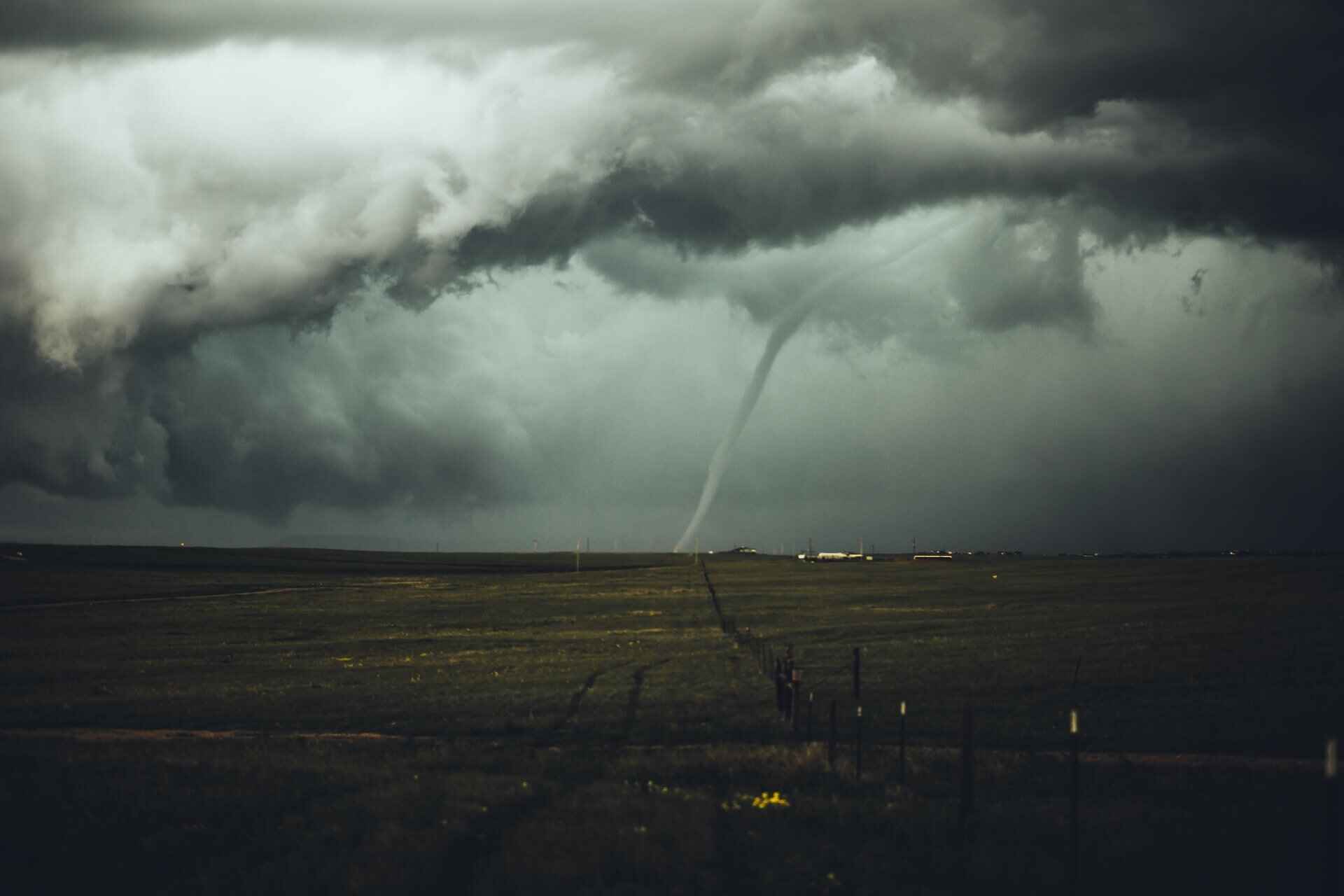
Beyond the Storm: Additional Phenomena to Explore
Rain wrapped tornadoes are dangerous, but other weather events that result from severe storms also need our attention. The study of these events can help improve our understanding of severe thunderstorms and their impact. By pursuing other phenomena, researchers will have a better grasp on weather patterns which can lead to improved prediction models and ultimately safer communities.
The Phenomenon of Green Sky Tornadoes
Just like rain wrapped twisters, green sky tornadoes mystify both scientists and the general public. By studying these and other unique weather events, researchers broaden their knowledge of how Earth’s atmosphere behaves during high winds. This not only satisfies scientific curiosity but also bolsters ways to protect communities from surprise storms.
What Causes This Surreal Event?
When you see a green sky before or during a tornado or severe thunderstorm, it’s quite a sight to behold. Scientists have been trying to understand this phenomenon for years. While it still confuses experts today, it’s generally thought that when sunlight interacts with water droplets or hailstones in storm clouds, the scattering effect creates the green hue. As researchers learn more about this process they may be able to develop an additional layer of accuracy in predicting such adverse weather conditions.
Other Types of Tornadoes
Tornadoes don’t all look alike. From classic cone-shaped twisters to slender stovepipe tornadoes that are almost alien in appearance, understanding each form is crucial for accurate identification and risk assessment. Waterspouts — tornadoes that form over water — present another interesting topic for study as well and showcase just how diverse these natural disasters can be.
Stovepipe Tornadoes and Waterspouts: Unique Characteristics
Tornadoes shaped like pipes aren’t typically called “stovepipe” because they’re notorious home destroyers; they actually resemble those cylindrical structures quite closely! Waterspouts show us how versatile tornado-forming conditions can be too — these begin over H2O then make their way on land, transforming into tornadic waterspouts. As meteorologists further research these various forms, they’ll have a better grasp on how all twisters work and improve prediction and warning technology across the board.
Ensuring Safety and Preparedness: Final Thoughts on Rain Wrapped Tornadoes
Rain wrapped tornadoes are particularly tricky to see because of the curtain of rainfall that surrounds them. These tornadoes pose great danger to not only the public but experts as well — it’s hard for anyone to know one is approaching before it’s too late. That’s why it’s crucial that people rely on the National Weather Service for accurate updates and information. The service has invested in advanced radar technology called dual polarization which helps meteorologists see inside storms more clearly than ever before, allowing them to spot and track rain-wrapped tornadoes more effectively.
Knowing just how dangerous a tornado is, categorized by the Enhanced Fujita Scale, could save your life when one touches down. That means having some sort of safe haven built or in mind for those who live where this kind of weather is common. Plus, there’s staying informed through mobile apps and weather alerts to give you extra minutes before it hits. Preparation isn’t just about making a plan either; it’s also about realizing what can go wrong with each type of twister. And there’s plenty that can go wrong when they’re rain wrapped, for example.

